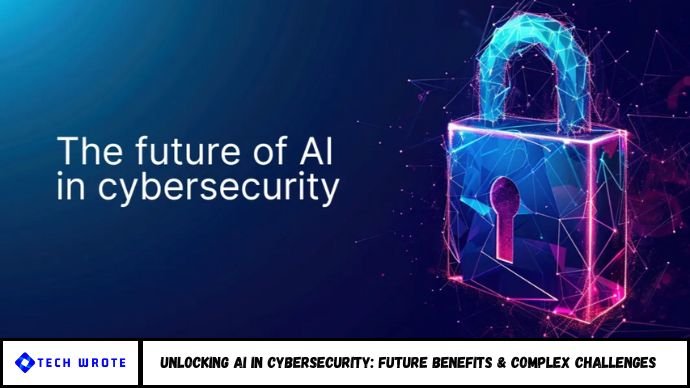Unlocking AI in Cybersecurity: Future Benefits & Complex Challenges Artificial Intelligence (AI) is transforming cybersecurity by enabling faster threat detection, proactive defense, and better risk management. As cyberattacks grow more complex, understanding the benefits and intricacies of AI integration is essential. This article explores how AI can revolutionize cybersecurity while addressing the challenges that come with it
The use of AI in cybersecurity is not a new concept. In fact, it’s been around for decades, with the first AI-based intrusion detection system being developed in the 1980s. Traditionally, cybersecurity relied on rule-based systems, where specific rules were set to detect and prevent threats. However, with the exponential growth of data and the increasing sophistication of cyber-attacks, rule-based systems proved to be inadequate in detecting and preventing advanced cyber threats and the need for AI in cybersecurity has become more pressing than ever before. This is where Large Language Models (LLMs) and AI come in. AI systems are able to analyze vast amounts of data in real-time, identify patterns, and make decisions at lightning speed making them highly effective in detecting and preventing cyber-attacks.
Introduction: Can AI Really Outpace Cyber Threats?
In 2024 alone, cybercrime cost the global economy over $10.5 trillion, a number projected to grow rapidly. With such high stakes, traditional defense systems are no longer enough. Enter Artificial Intelligence—a powerful ally capable of identifying threats in real time, adapting to new attack vectors, and automating incident responses.
But with great power comes complexity. How do we balance AI’s promise with the risks of overdependence, false positives, and algorithmic bias?
1. How AI Enhances Cybersecurity Defense
Faster Threat Detection and Response
AI-driven tools analyze massive datasets in seconds, identifying anomalies traditional systems might miss.
- Machine Learning (ML) detects suspicious patterns and flags potential breaches.
- Natural Language Processing (NLP) monitors communication for phishing and insider threats.
- Behavioral analytics anticipate breaches by recognizing unusual user behavior.
2. Real-World Applications of AI in Cybersecurity
AI in Action Across Industries
- Finance: Detects fraud in real-time using ML algorithms.
- Healthcare: Secures sensitive patient data against ransomware.
- Government: Automates threat intelligence and response in defense networks.
Case Study:
Darktrace, an AI cybersecurity firm, detected a zero-day exploit in a client’s network 10 days before traditional tools caught it.
3. Challenges of Integrating AI in Cybersecurity
Bias, Overreliance, and Cost
While AI offers immense benefits, it’s not foolproof:
- False positives can flood systems with alerts.
- Algorithmic bias may ignore nuanced threats.
- Initial costs for setup and skilled personnel are high.
4. Navigating the Ethical and Technical Complexities
Building Trustworthy AI Systems
To unlock AI’s full potential, companies must:
- Train models on diverse datasets to reduce bias.
- Employ human oversight to review critical decisions.
- Regularly audit AI tools for performance and accuracy.
5. Future Outlook: AI-Powered Cybersecurity in 2030 and Beyond
Experts predict that by 2030:
- AI will handle 90% of routine cyber operations.
- Autonomous defense systems will become standard in enterprise environments.
- Hybrid human-AI teams will lead incident response for national security.
Frequently Asked Questions (FAQs)
1. What is AI in cybersecurity?
It uses machine learning and automation to detect, prevent, and respond to cyber threats faster and smarter.
2. How does AI detect cyber threats?
By analyzing patterns, behaviors, and anomalies in data using trained algorithms.
3. Is AI completely reliable in cybersecurity?
Not entirely. AI improves accuracy but still requires human oversight to manage errors and biases.
4. What are the downsides of AI in cybersecurity?
False alerts, biased algorithms, high implementation costs, and overreliance are key challenges.
5. Can small businesses use AI for cybersecurity?
Yes, many scalable AI tools are designed for small to mid-sized enterprises at accessible price points.
6. Will AI replace cybersecurity jobs?
No. AI augments human roles by automating repetitive tasks, but expert oversight remains critical.
Conclusion
Artificial Intelligence is reshaping cybersecurity—accelerating threat detection, reducing response times, and enabling smarter defenses. However, to fully harness its potential, organizations must invest in responsible AI practices, ensure ethical oversight, and adapt to new complexities.
The future of cybersecurity is not human or AI—it’s human and AI, working together to outpace ever-evolving threats.


